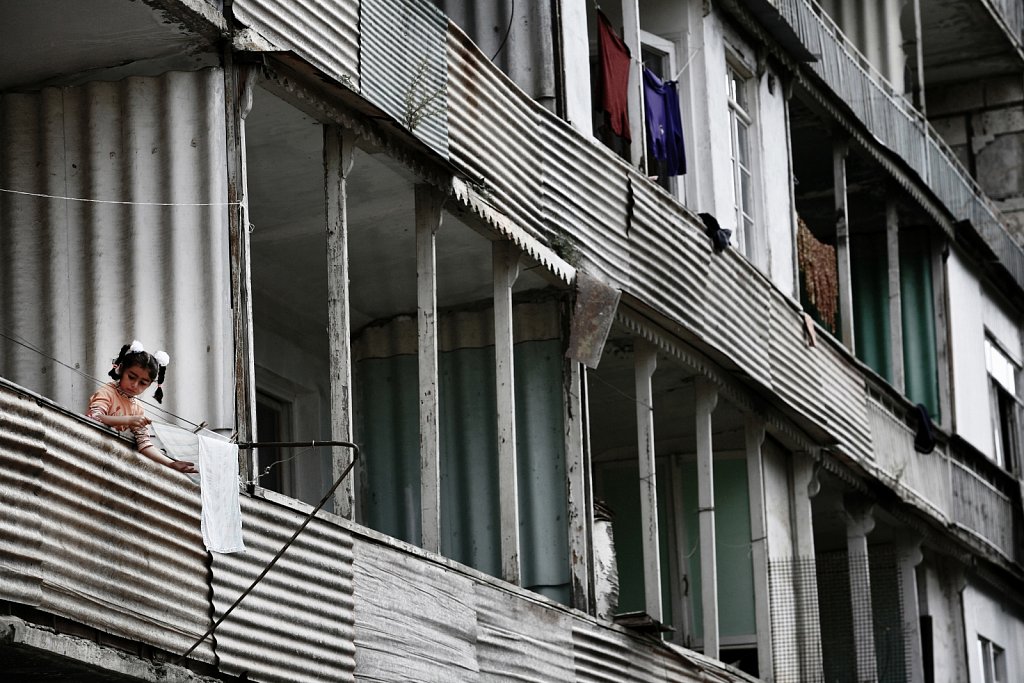
Nagorno-Karabakh
Laundries are hung up for drying between apartment blocks in a residential district in Stepanakert. With a population of 140.000, the majority being Armenians, Nagorno Karabakh Republic aims to achieve political and economical stability. The high unemployment rate, low salaries and the lack of opportunities for the youngsters make the unrecognized republic to be a hard place to live. Stepanakert, Nagorno-Karabakh, 20 September 2008.

Nagorno-Karabakh
A dryer room in an apartment block in Khojaly city, Nagorno-Karabakh. The city is a military base, situated near the border with Azerbaijan and 10 km Northeast of the capital Stepanakert. The city is known for the Khojaly Massacre committed on 25–26 February 1992 by the Armenian and, partially, by CIS armed forces (the Russian 366th Motor Rifle Regiment) during the Nagorno-Karabakh War. Khojaly, Nagorno-Karabakh, 19 September 2008.

Nagorno-Karabakh
A little girl hangs the laundry for drying at the balcony of an apartment block in the city of Shushi. The city is considered the second largest in Nagorno-Karabakh after the capital of Stepanakert, as size and population density. Before the Nagorno-Karabakh War it was the main cultural center. Shushi, Nagorno-Karabakh, 18 September 2008.